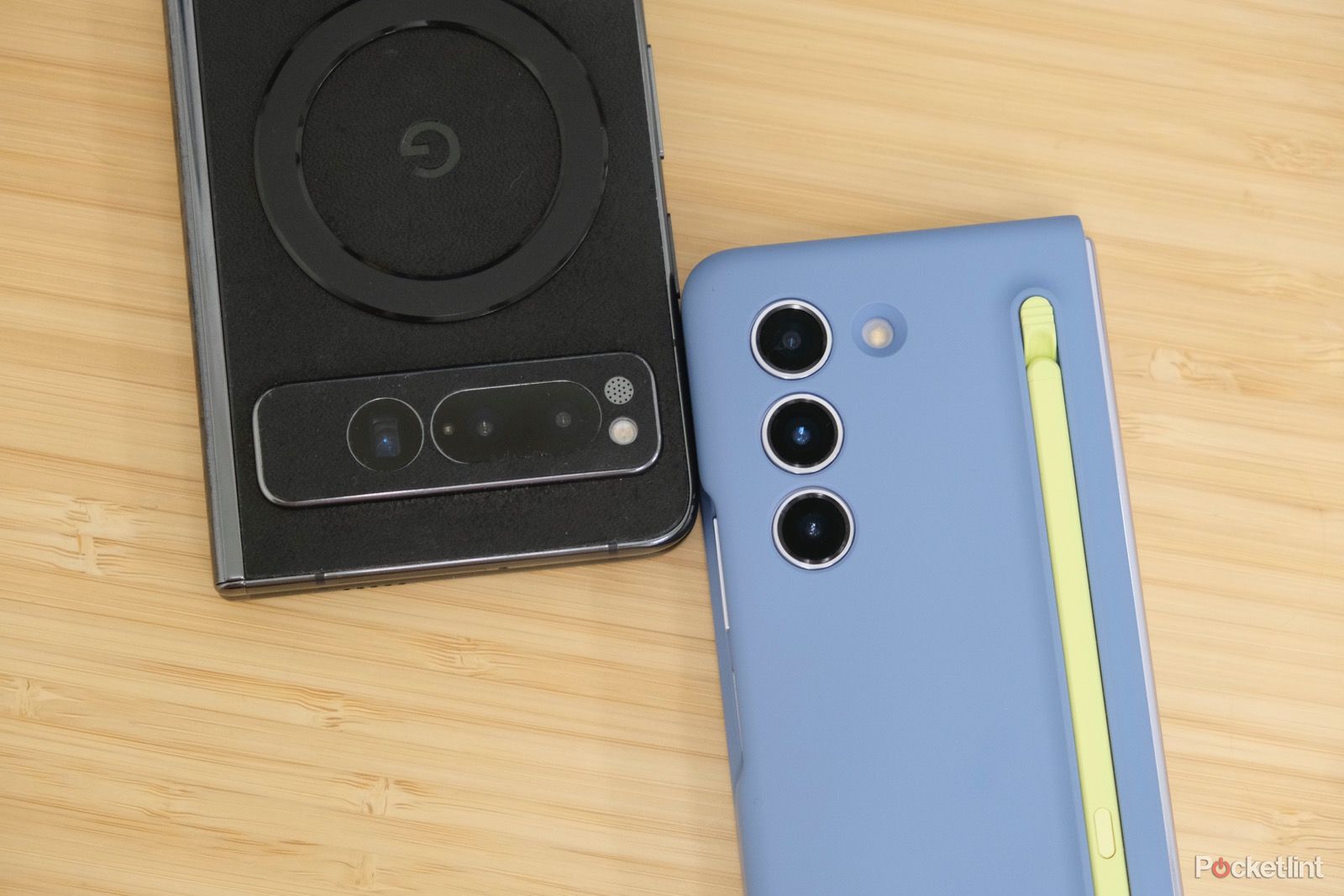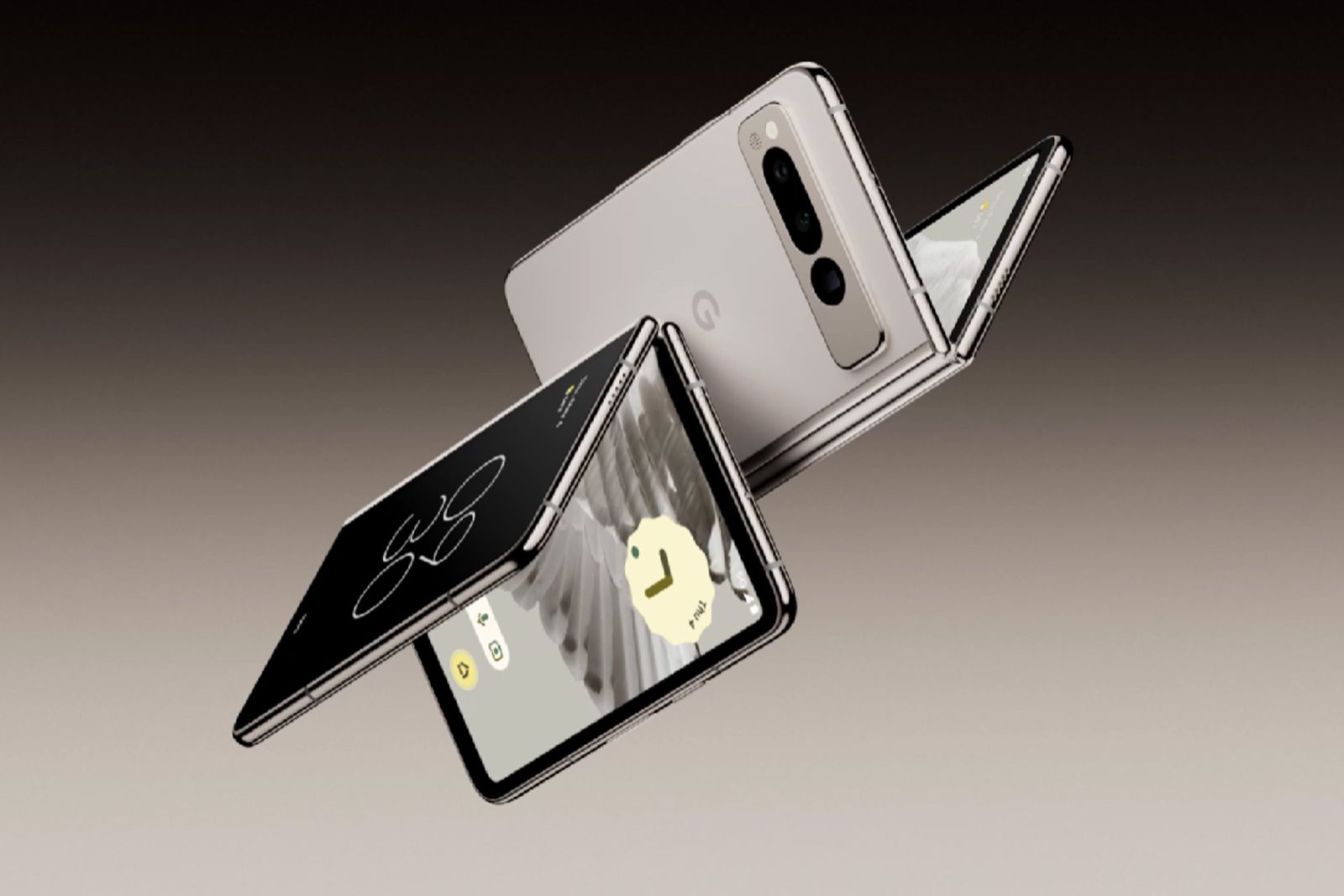Google's first foldable smartphone, the Pixel Fold, takes a different approach when it comes to design and software, setting it apart from the Z Fold 5 right out of the box. For its part, Samsung has stuck with the same design for the Z Fold 5, and is even using the same camera stack that was used in the Z Fold 4. That's not necessarily a bad thing, but now that Samsung is facing more competition in a smartphone segment that's growing and maturing, has Samsung done enough to compete with Google's Pixel Fold?
The Pixel line is known for its camera quality and performance, while Samsung is also known for taking great, but almost always over-saturated, photos. That matches what saw in our camera showdown of the Galaxy S23 Ultra versus the Pixel 7 Pro, with the Pixel 7 Pro barely beating out Samsung's high-end camera setup.
This got us to thinking - now that Google's first foldable phone is here, how does it stack up to the fifth-generation Z Fold? So, we went out, shot a bunch of photos and compared the results. Below you'll see plenty of samples that you can judge for yourself before we get to the final verdict.
A quick rundown of the specs
Before taking a look at the photo samples, let's take a quick look at what each phone's camera array is equipped with.
Galaxy Z Fold 5 | Pixel Fold | |
|---|---|---|
Main | 50MP, f/1.8, 85 degree FOV | 48MP, f/1.7, 82 degree FOV |
Ultrawide | 12MP, f/2.2, 123 degree FOV | 10.8, f/2.2, 121.1 degree FOV |
Telephoto | 10MP, f/2.4, 3x optical/30x Space Zoom | 10.8, f/3.05, 5x optical/20x Super Res Zoom |
Front (cover) | 10MP f/2.2 | 9.5MP, f/2.2 |
Front (inside) | 4MP f/1.8 UPC | 8MP, f/2.0 |
Samsung's Z Fold 5 is using the same camera setup as last year's Z Fold 4, and with the Pixel Fold being Google's first attempt at a foldable smartphone, it's all-new hardware for the model. Both models use three main cameras on the rear of the phone, and have two different front-facing cameras; one for each display. For the Z Fold 5 that translates into a 50-megapixel main camera, a 12-megapixel ultrawide, and a 10-megapixel telephoto shooter. The Pixel Fold has a 48-megapixel main, a 10.8-megapixel ultrawide and a 10.8-megapixel telephoto.
The front-facing selfie cameras consist of a 10-megapixel camera on the front screen of the Z Fold 5, while the Pixel Fold has a 9.5-megapixel camera above the front screen as well. Internally, Samsung stuck with its 4-megapixel under-display camera, while Google has put the 8-megapixel selfie camera in the phone's bezels above the screen.
All of these cameras are comparable and offer reliable performance, but when it comes to image processing and tuning you start to see the most significant differences in the final product from photos captured on a Samsung or Google phone.
The main camera: True to life vs. saturation
The Z Fold 5's main camera is capable of capturing up to 50-megapixel images, while the Pixel Fold is slightly lower at 48-megapixels. However, both phones produce 12-megapixel photos from those cameras by default.
Google's approach to its camera app is essentially: less is more. You're not forced to or even really given the option to make too many decisions about which settings you want to use for each shot. Instead, you select a shooting mode and take the picture. Samsung's approach is similar, but with a few taps into the camera app's settings, you'll find more advanced modes including a pro section that gives you complete control over the camera's settings.
For the purpose of this post, I never touched the pro controls. Instead, I let both phones and their respective camera apps decide which mode or settings were appropriate for each shot.
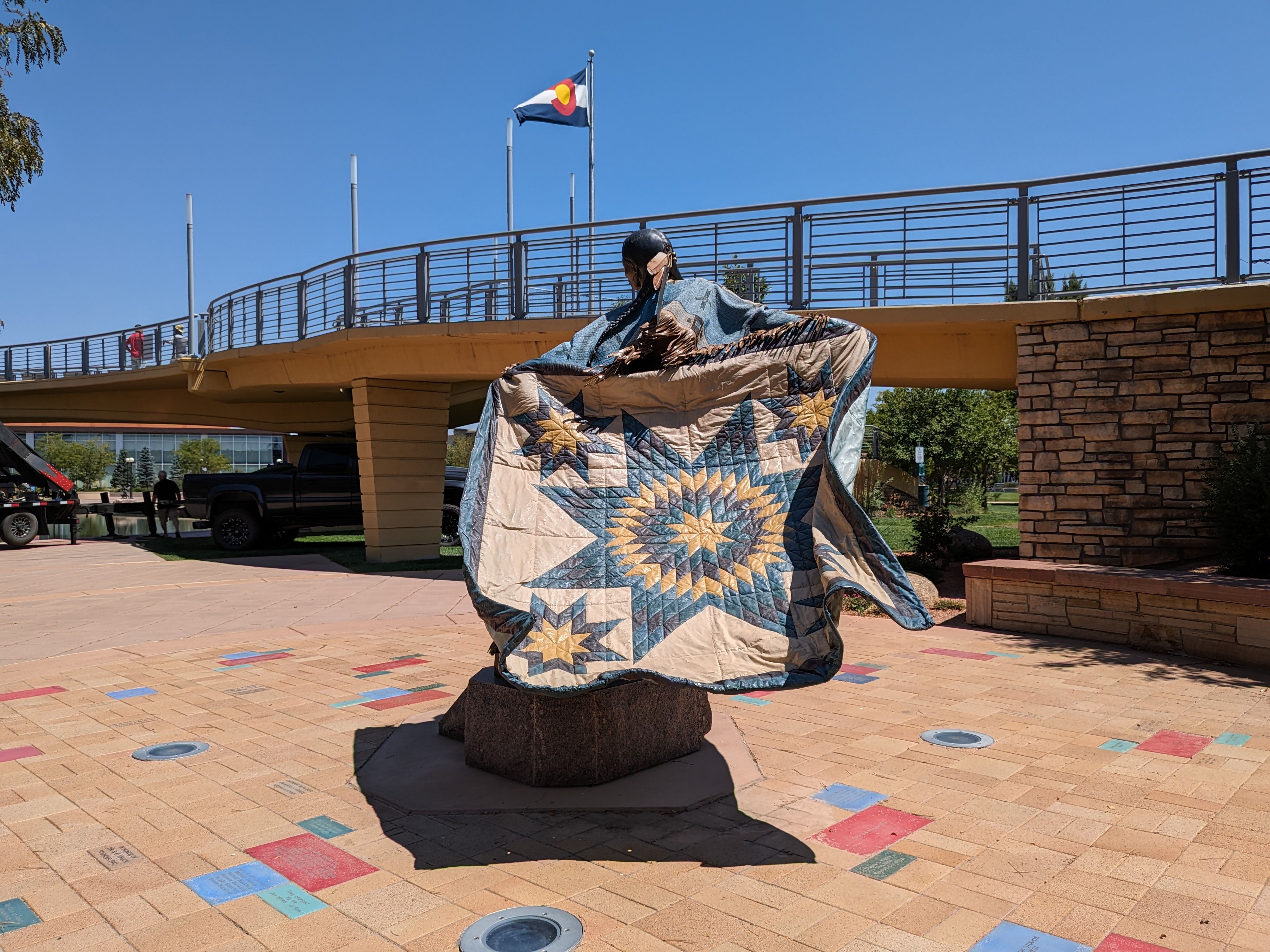
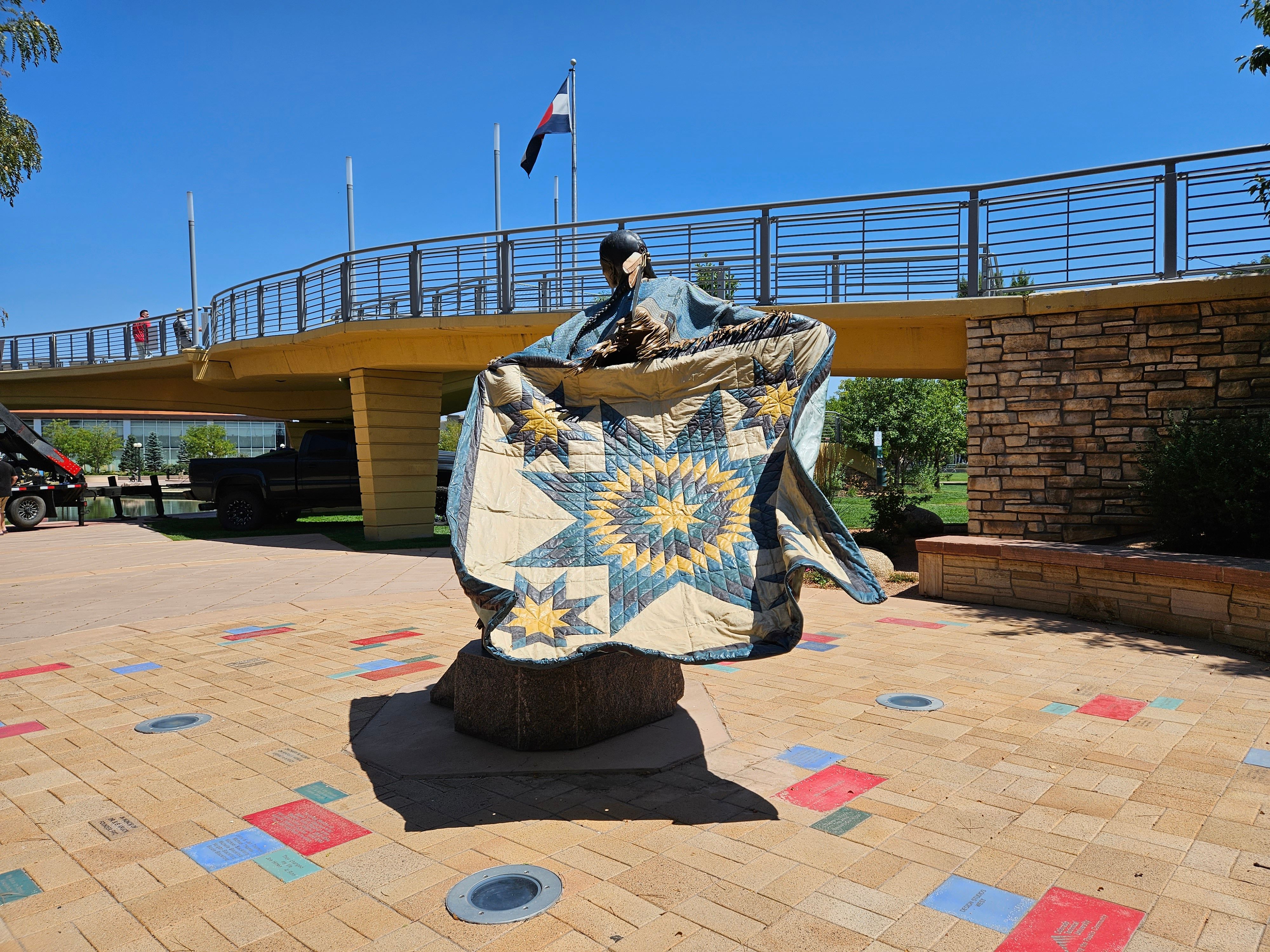
The image on the left was taken with the Pixel Fold, and looks clear, sharp and almost identical to what the statue's blanket looks like in real life. The image on the right was taken with the Z Fold 5, and you can immediately see the colors on the ground along with the blue sky are brighter and more saturated. The same goes for the colors on the blanket; the brown tiles are tan, while the greens and blues are more saturated. (Click on the images to view a larger version of each one to judge for yourself. Each photo is labeled with the camera it came from for easy identification.)
Either photo is something I'd be happy to share on social media, and in fact, there's an argument to be made that the Z Fold 5's photos are more appealing due to the increase in saturation.
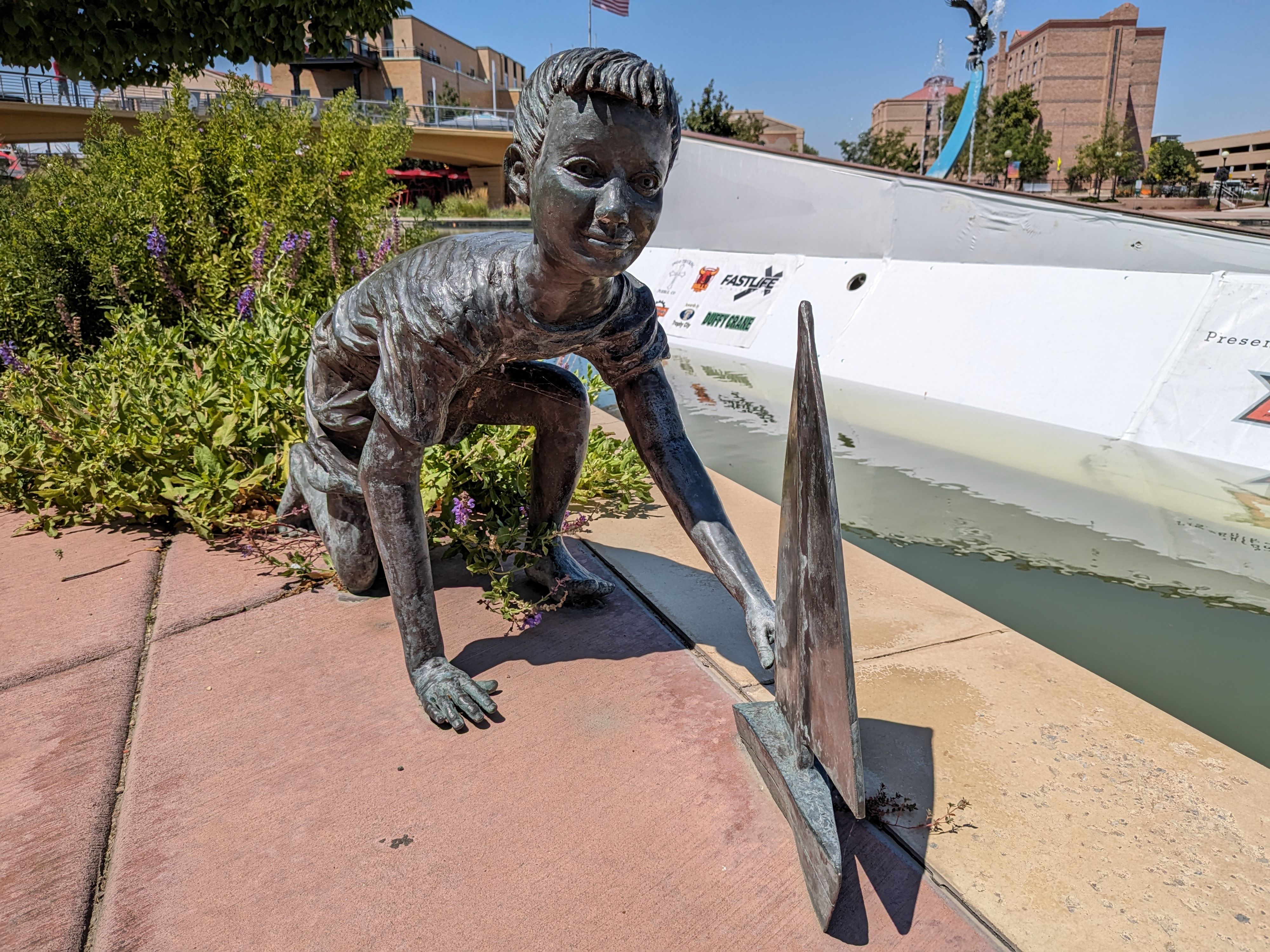
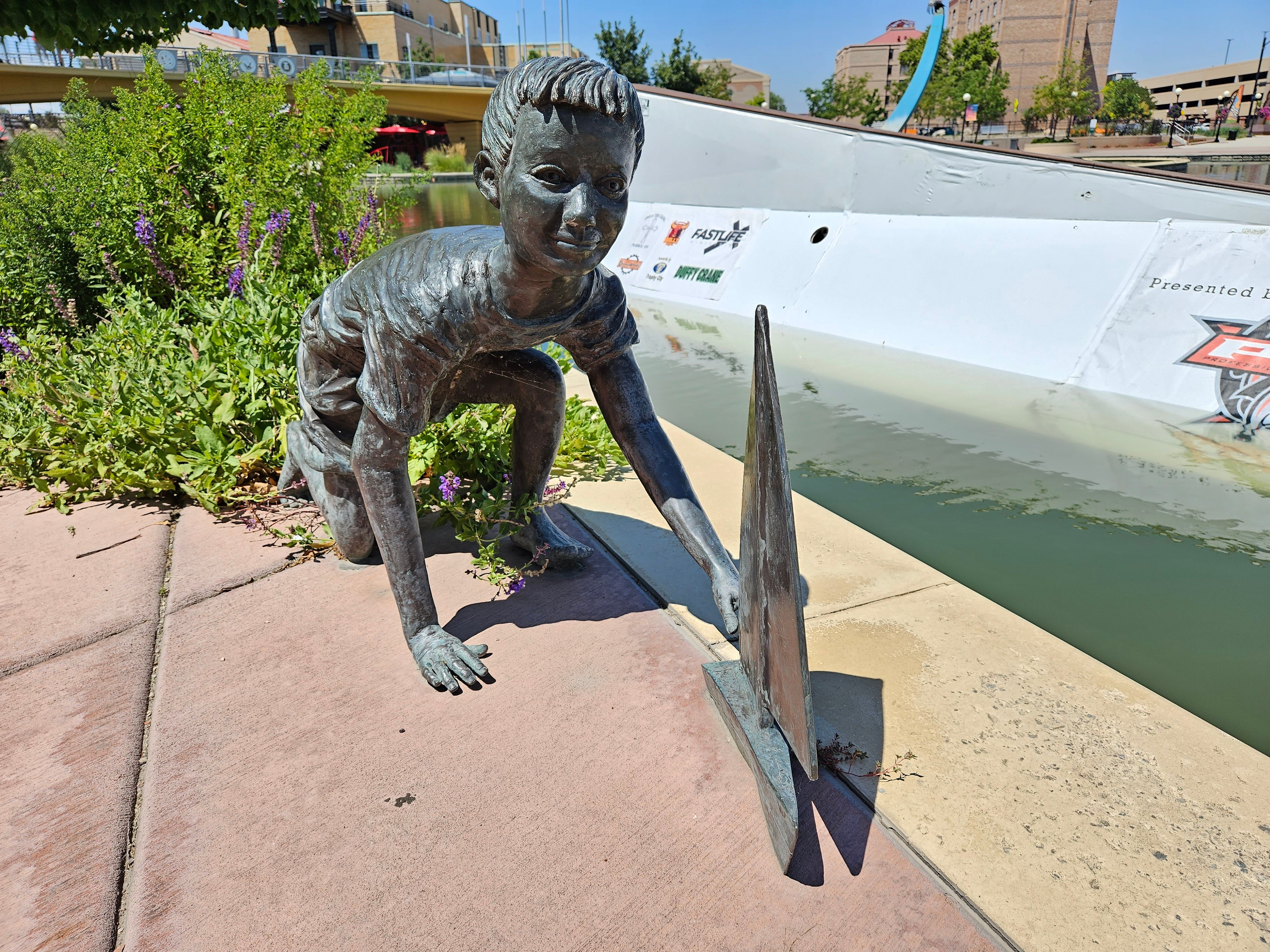
In the above images, you can clearly see that the photo on the right taken with the Z Fold 5 increased the overall exposure of the statue while making the plants behind and the water slightly greener. The ramp has an off-white or even slightly gray color to it, while the image captured with the Pixel Fold shows a completely white ramp, and the rest of the color reproduction is more accurate to what I saw with my own eyes before taking the shot.
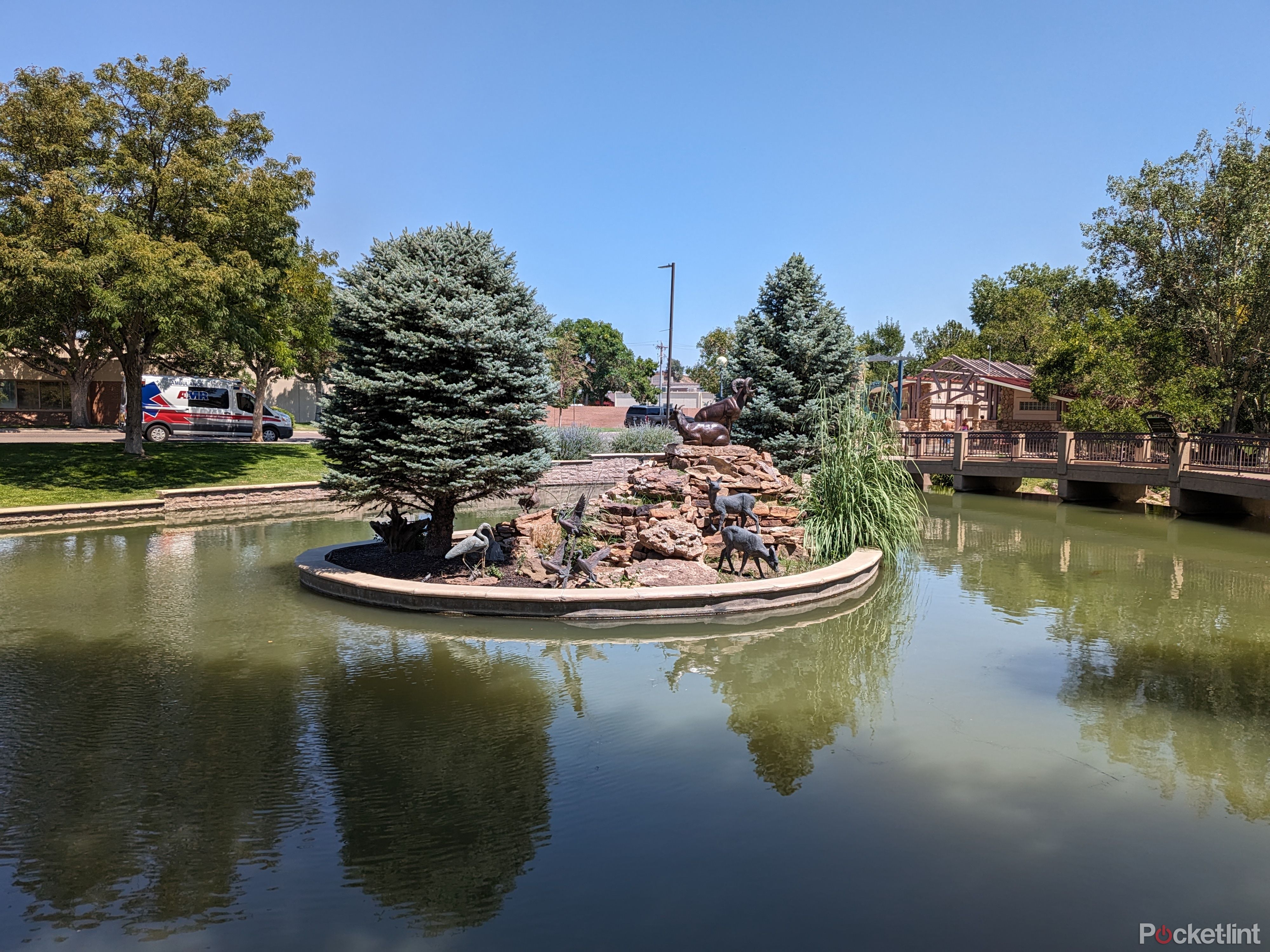
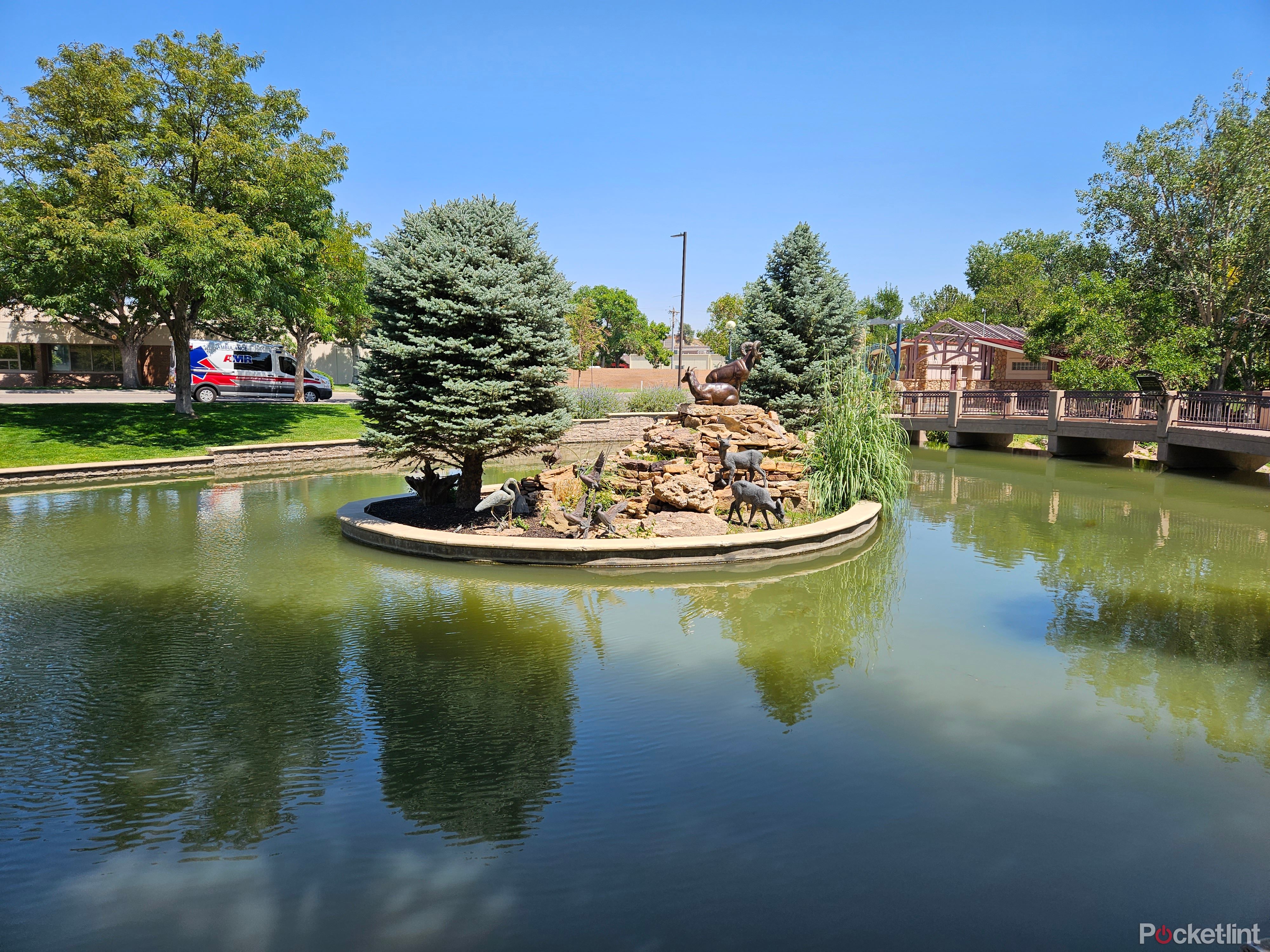
Alright, my last two landscape photos. You can clearly see that the image on the right has brighter greens and blues, but what really stood out to me in this comparison is how the Z Fold 5 overexposed the island in the middle, taking away any real quality from the focal point of the image. The image on the left, taken by the Pixel Fold, keeps the shadows found throughout the image at their dark levels, while also capturing the detail and life-like exposure levels of the island and surrounding areas. At first glance, the Z Fold 5's picture looks better, but when you zoom in and see the animal statues on the island and their overall quality, it loses its appeal.
Zoom: Closer isn't always better
The Pixel Fold's telephoto lens offers up to 5x optical zoom, or up to 20x Super Res Zoom (digital). The Z Fold 5 is equipped with a similar setup, with 3x optical zoom and 3x and 30x Space Zoom. The optical portion of each phone's zoom level is all done via hardware, and should result in similar performance across both phones. However, when you start using the digital zoom features, be it Super Res Zoom or Space Zoom, that's where machine learning and computational photography comes into play to make up for the loss of quality.
Because the two phones lack the same zoom levels, I've tried to do my best to take similar photos where you can really see the differences and similarities.
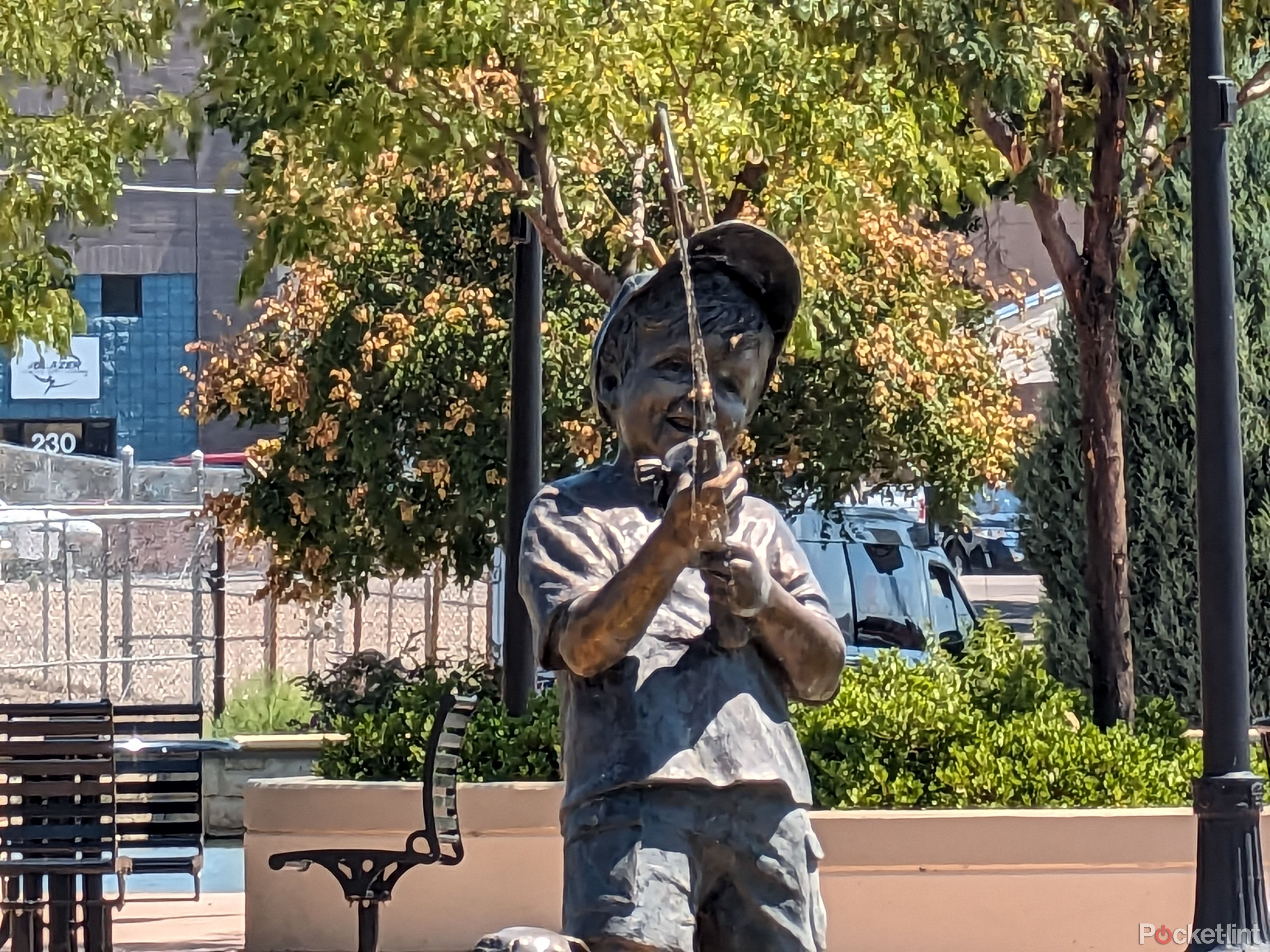

Both of these photos were taken at a 20x zoom level. The photo on the left was taken with the Pixel Fold, while the photo on the right was taken with the Z Fold 5. Neither photo is bad, and they both show the staple Pixel vs Samsung traits of being more life-like or over-saturated, respectively. But where I think the Pixel Fold shines is with how much detail it kept in the photo, especially on the boy's face. The Z Fold 5, however, overexposed the boy's face and body, and struggled with shadows and with recreating the finer details of the statue to make it appear as it would to the naked eye.
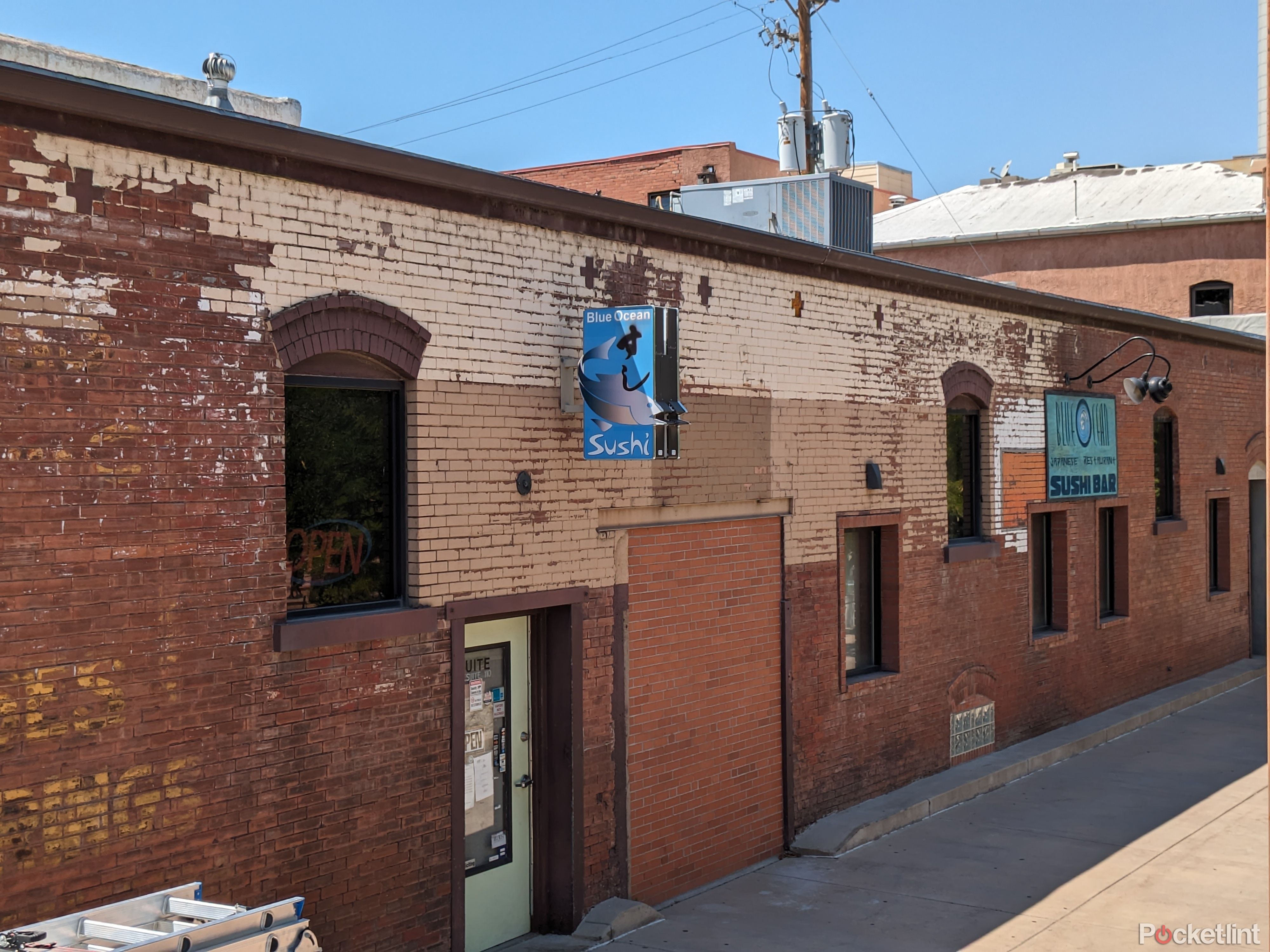
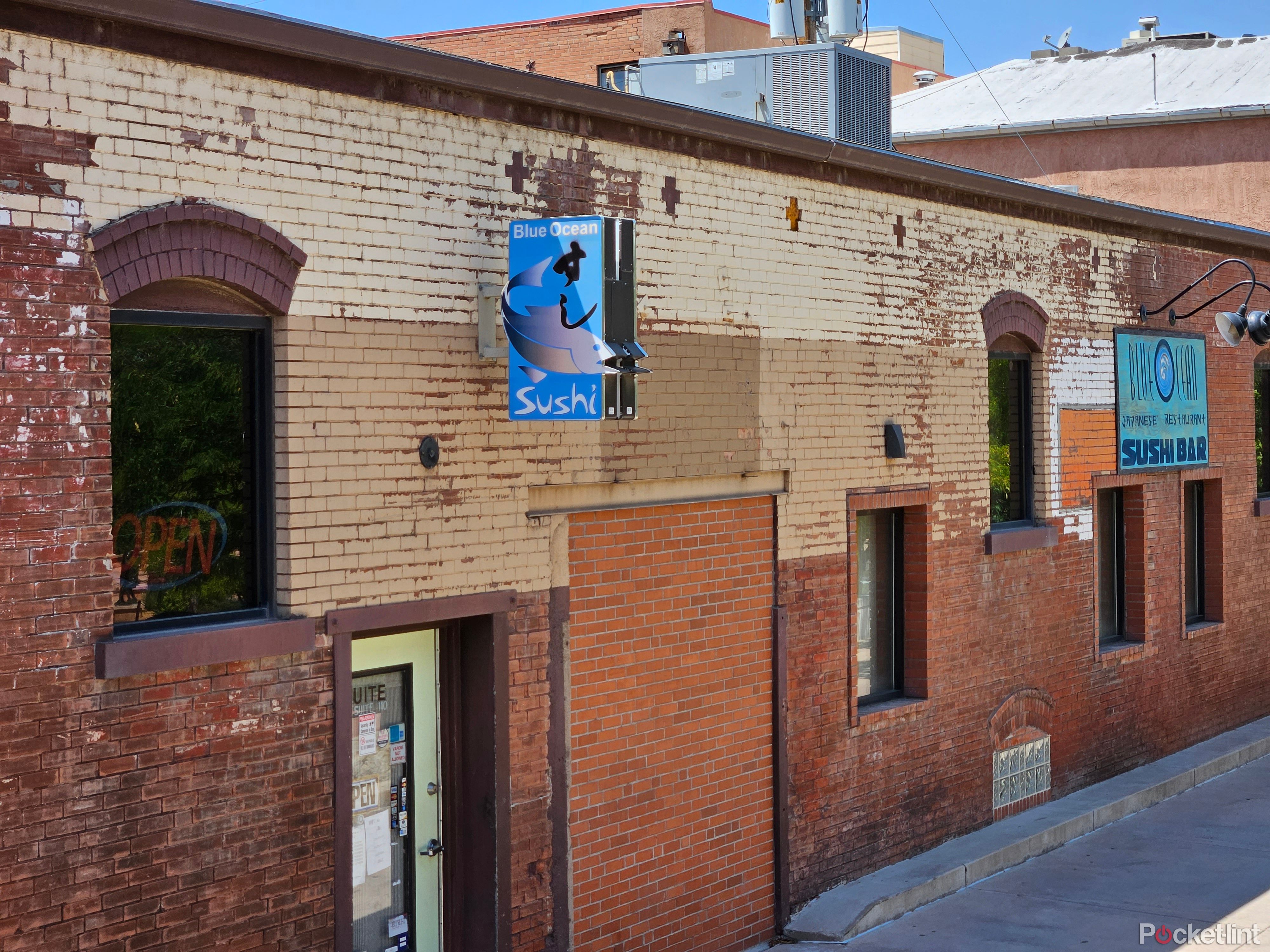
I decided it'd be prudent to test the default 2x optical zoom option on the Pixel Fold along with the default 3x optical zoom option on the Z Fold 5 while I was at it. The comparison on these photos is a little more difficult because the Pixel Fold captures so much more of the building which has different shades of bricks and lighting conditions, while the Z Fold 5 has a smaller section of the building. But, I think they both did a great job capturing their respective shots.
Selfies: A new way to take better selfies
Foldable phones have one major advantage over standard smartphones when it comes to taking selfies. Instead of using what's typically the worst camera on a smartphone - the front-facing camera - foldable phones give you the option to use the rear-facing cameras for selfies. You usually achieve this by opening the camera app, selecting a button to indicate you're going to open the foldable and use the front screen along with the rear cameras to take a selfie.

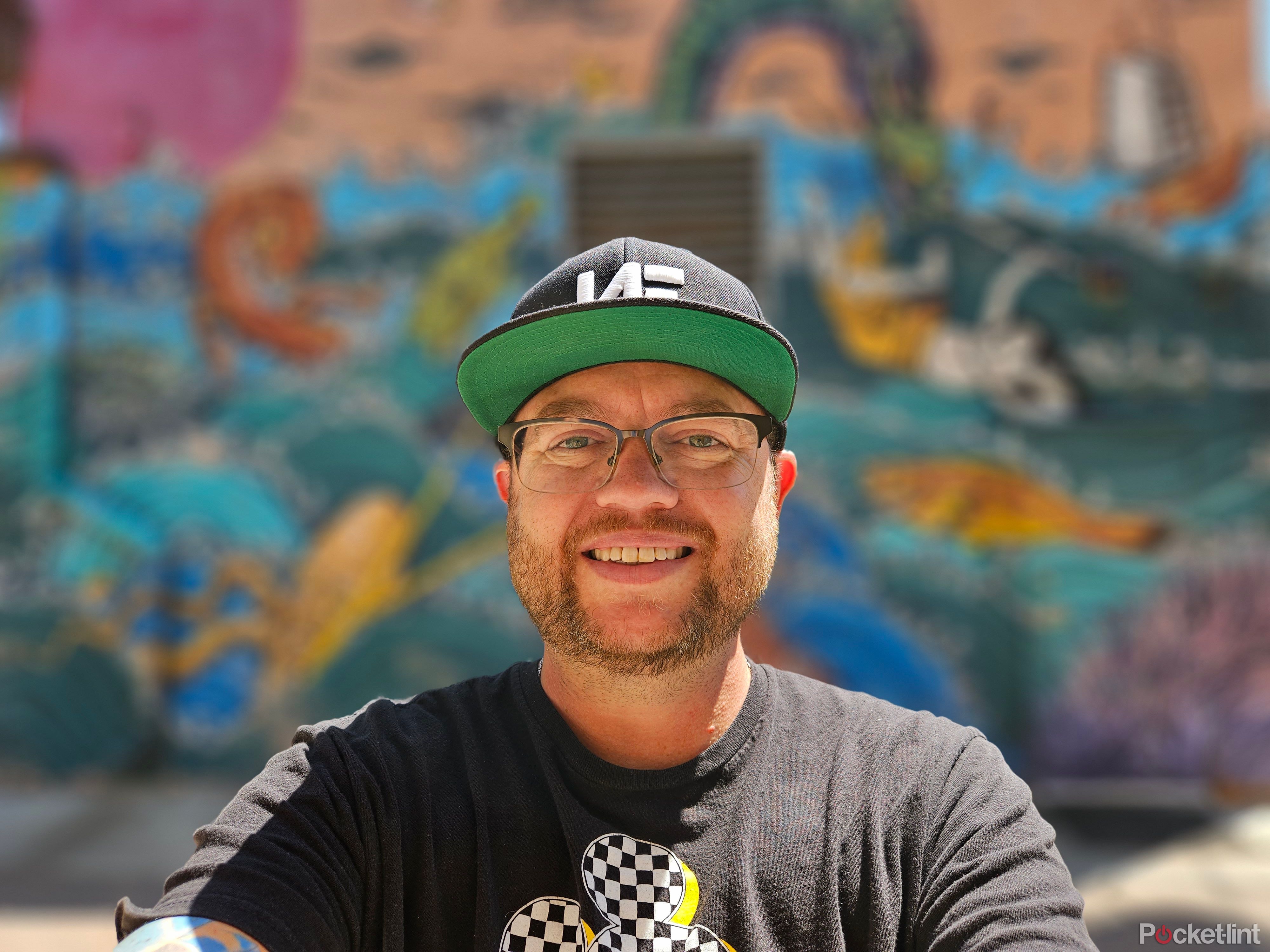
Both of the above photos were taken with the main camera using portrait mode at the same distance from my face. The Z Fold 5 looks like it was taken from further away, but that's due to the difference in the slightly larger field of view that the main camera has over the Pixel Fold (85 degrees versus 82 degrees). This is one of the first comparisons where I actually prefer the Z Fold 5's (the picture on the right) over the Pixel Fold. To me, the Pixel's photo has a red tint to it, particularly on my skin, that's not actually there. The Z Fold 5's picture looks more true to life, at least on the part where my face and skin are included. The background of the image, however, is still slightly over saturated. But the combination of an accurate handling of my face and skin tone with the artwork in the background is a pleasant picture.
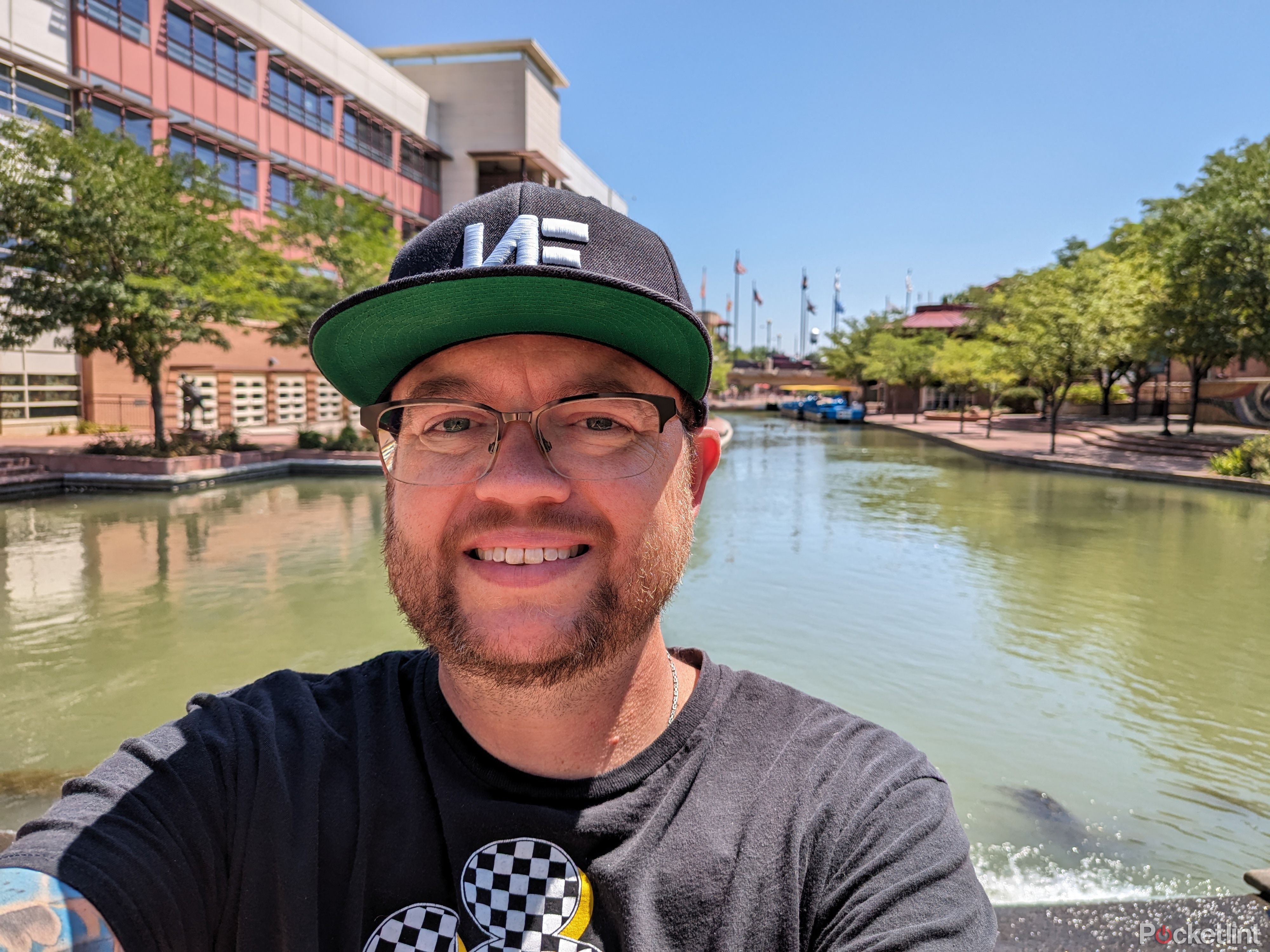
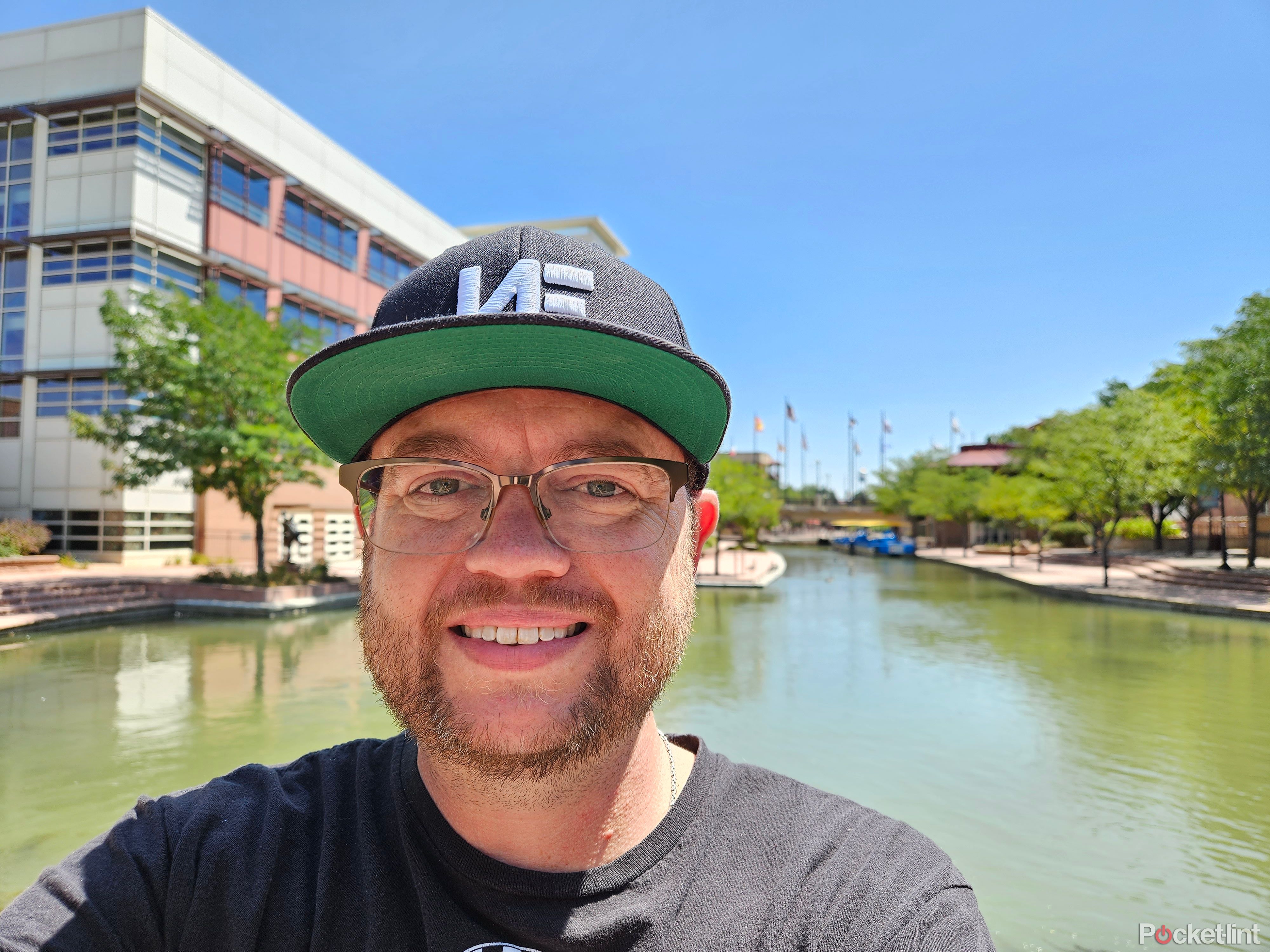
Here's another set of selfies, again taken with the main rear camera on both phones, but captured in normal mode - that is, without portrait mode turned on. The Pixel Fold's picture once again has that same red tint to my skin tone, while the Z Fold 5's picture is more accurate. However, the rest of the Z Fold 5 picture is overexposed and saturated. If I had to pick from these two photos, I'd opt for the Pixel Fold photo.
Night photography: Both pretty great options
In well lit environments, picking which photo (and by extension, phone) you prefer comes down to personal preference or in some cases a coin flip. However, when taking pictures at night, there's a little more separation between the performance from both phones. But when it comes to taking photos at night, or in low lit environments, Google's typically lead the way when it comes to performance and the Pixel's overall ability to capture accurate photos, even when the night sky is your only light source.
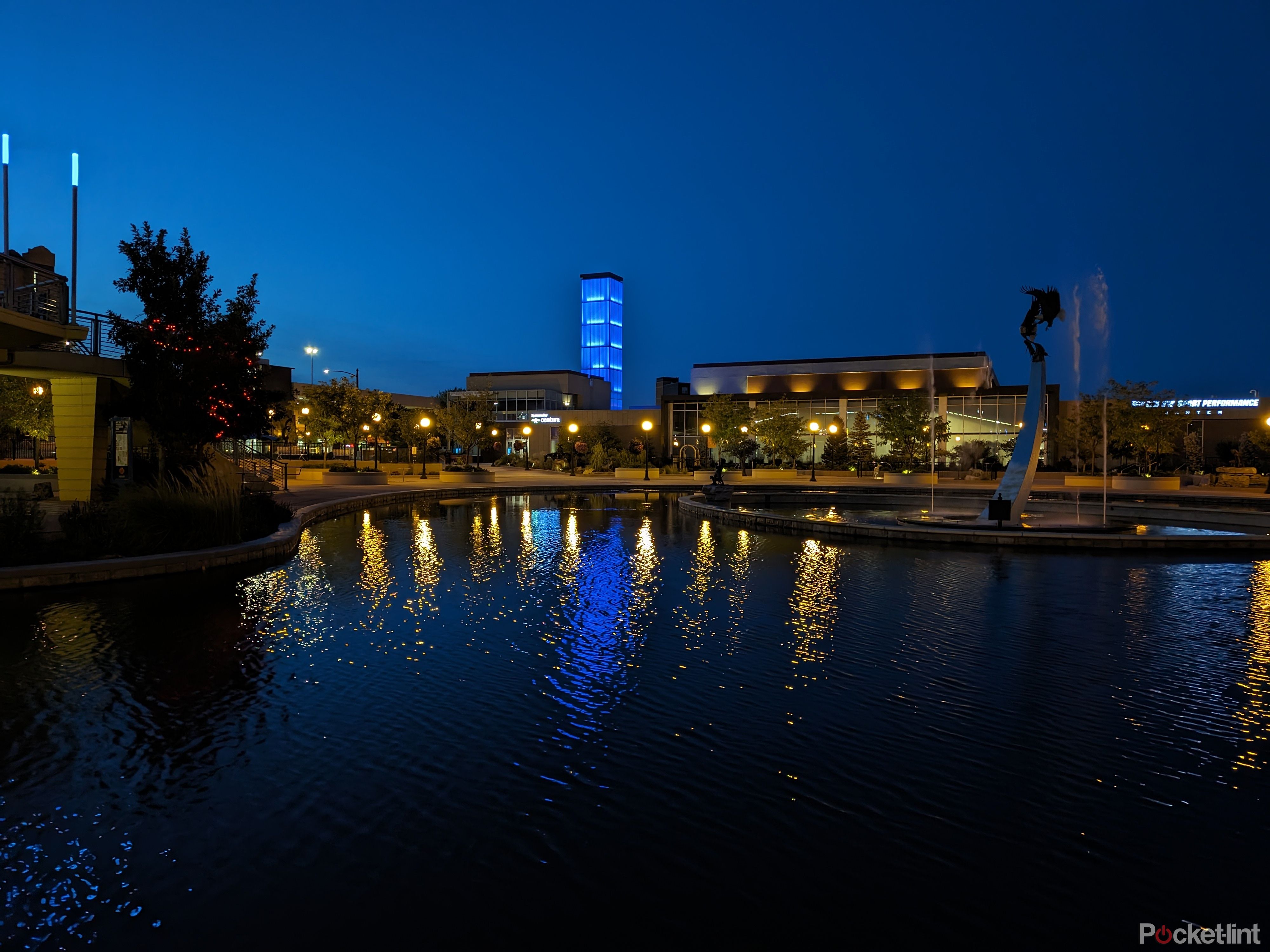
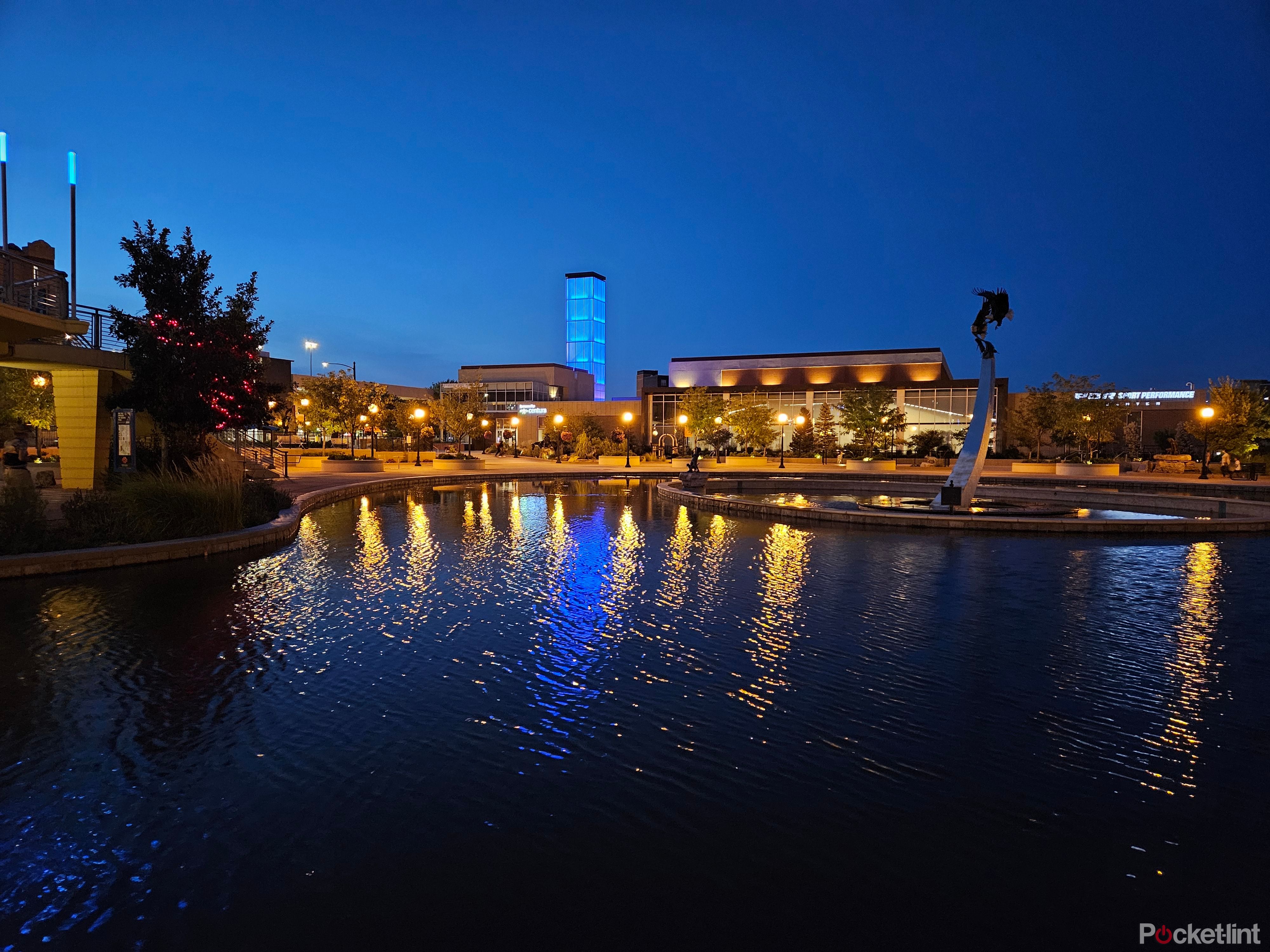
When I originally looked at these photos on the phone that captured them, I was sure the Pixel Fold did a better job. But now that I've taken a few minutes to look at them on my computer's screen, I'm leaning more towards the photo on the right, captured by the Z Fold 5. Both of these pictures were taken in night mode after being prompted by the phone's camera app to use it. To me, the photo on the right is slightly brighter, especially around the sky and the tower in the background, but also even when looking at the tree on the left edge of the photo.
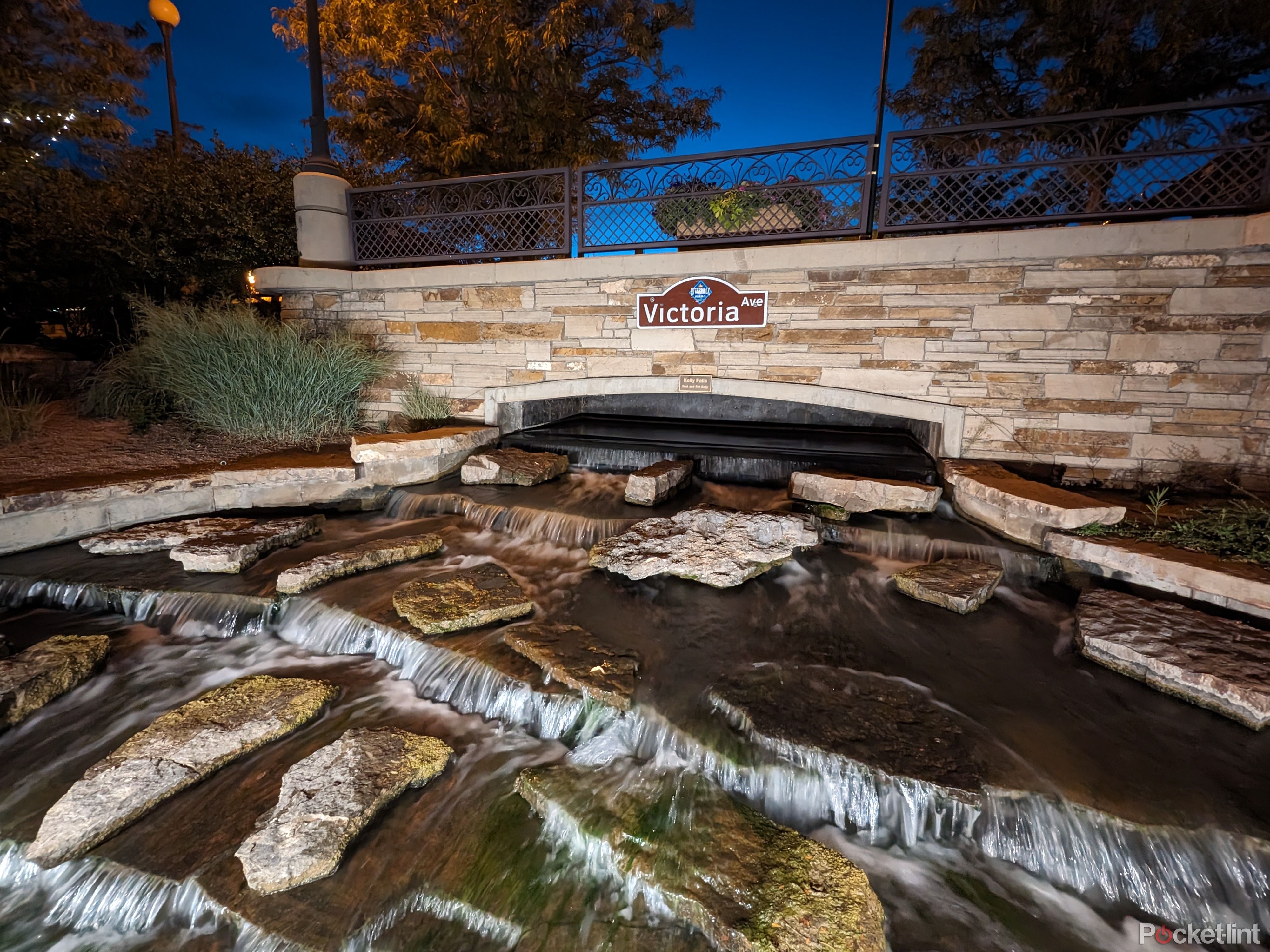
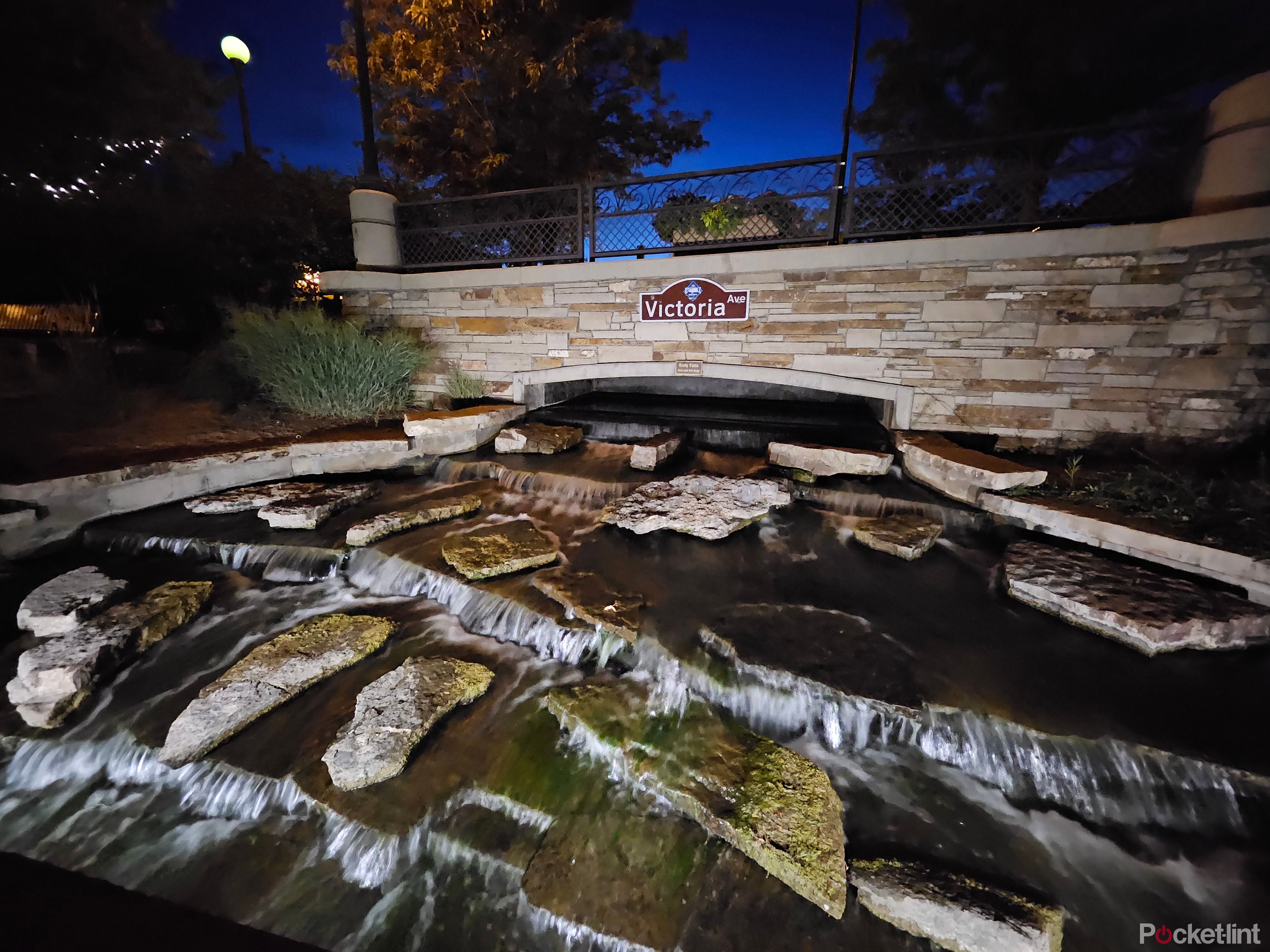
But then you look at this photo, where I also used night mode, and placed each phone flat on a bench to capture running water down these rocks. The Pixel Fold's picture is brighter, looks truer to life, and the water has some subtle movement to it. The Z Fold 5 did a good job, but the darker spots of the photo are clearly darker and there isn't as much detail in the water.
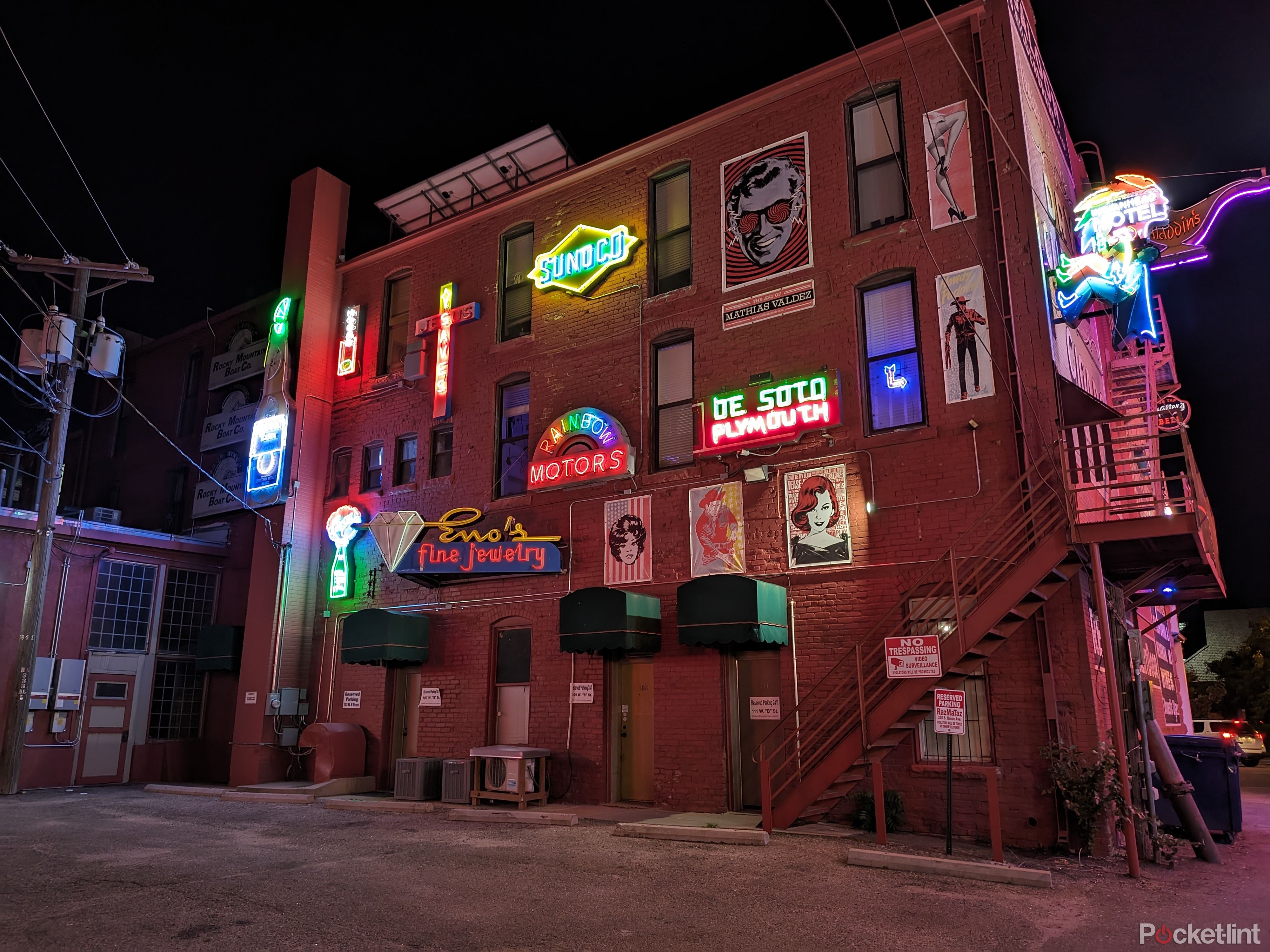
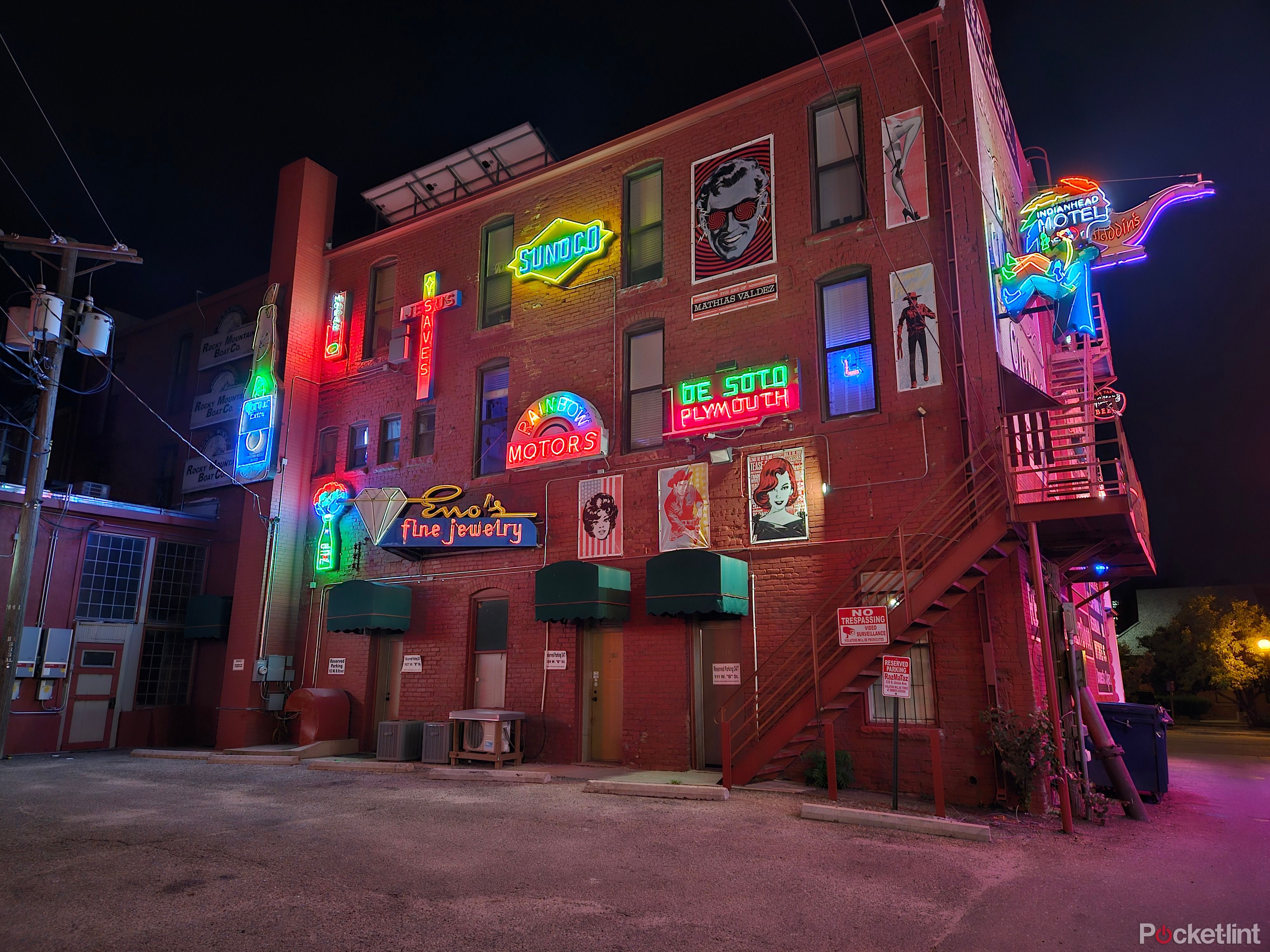
Here's another photo comparison where I think that you could really go either way with your selection. On the left, the Pixel Fold did a great job at capturing all the bright neon signs and the brick building. On the right, the Z Fold 5 did a good job as well, but also captured more light for the building itself - making it appear slightly brighter than the Pixel Fold. The signs themselves, however, are over saturated.
The street in front of the buildings also show a difference in how each phone captures a shot. The Pixel Fold's street has shadows and isn't all that well lit, while the Z Fold 5 has a street that's covered in light. Both of these photos are really close in overall quality and come down to personal preference. I personally think the Pixel Fold retains a small edge over the Z Fold 5, but it's no longer as clear-cut as it was even when we compared the S23 Ultra and the Pixel 7 Pro.
That said, I think there's one area where it's pretty clear which phone does a better job at creating photos: Night time selfies. Google has added some key features to the camera app in order to improve taking selfies at night, namely by adding an illumination feature that lights up your face to help capture a better photo, but also allowing you to set a timer and still use the camera app's night mode feature. That's the same capabilities as Samsung's Z Fold 5 has. Here's a sample using the phones at night in night mode. I cropped the portrait mode photos just for ease of publishing, otherwise there have been no edits made to either picture.
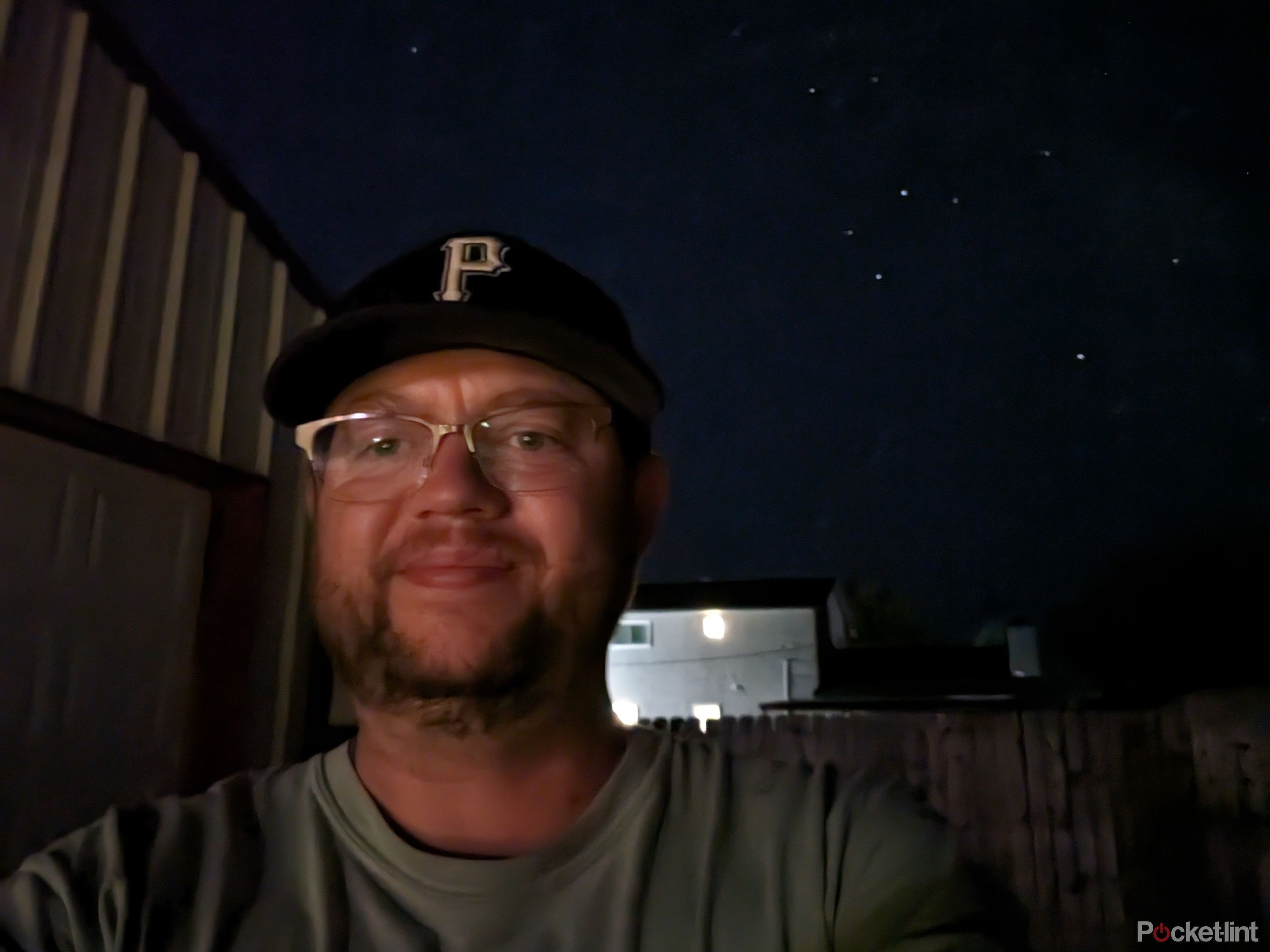
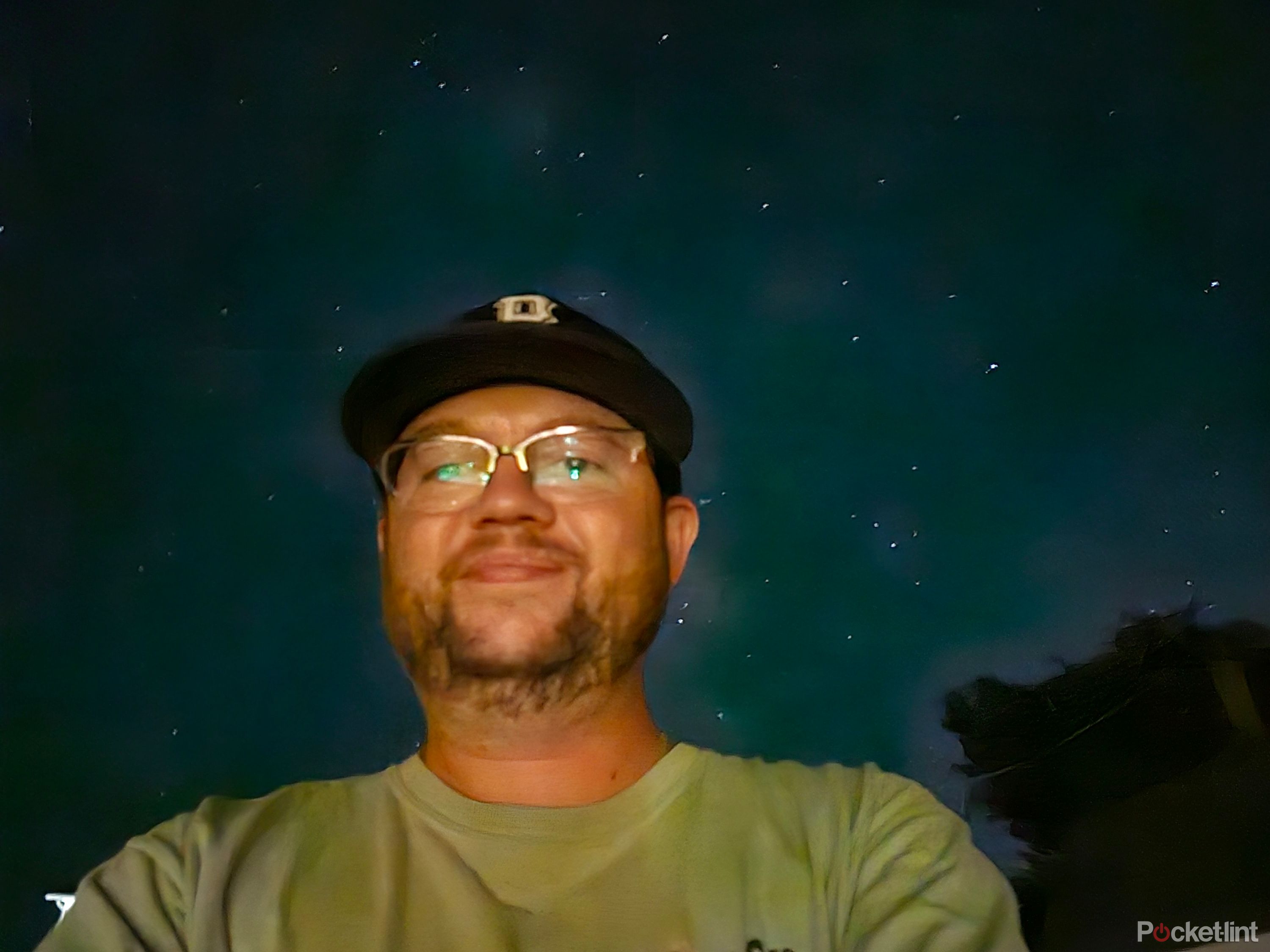
When you enlarge either photo, they both look pretty bad. But one thing I do want to highlight and point out is how the Z Fold 5 handles the night sky. It makes it almost look like there's some or galaxy right behind my head. Whereas on the Pixel Fold, that same area doesn't look as colorful and saturated. If I were sharing these, I'd probably want to share the Z Fold 5's, just for the added outer space effects.
Bottom line
I feel like we did a thorough job of covering the different shooting modes and cameras on the Pixel Fold and Z Fold 5, but in reality, we barely scratched the surface. Using the Z Fold 5's Pro mode alone would open up an entire world of comparisons that only diehard photographers would truly geek out on. In comparison, the Pixel Fold's camera interface is much cleaner and straightforward - offering handy tips when appropriate, but it mostly stays out of the way.
Samsung's Z Fold 5 isn't a bad camera, by any measure, and there are surely some who prefer Samsung's approach to photography overall. It's true, both phones offer three robust rear-facing cameras, and two mediocre at best front-facing cameras. However, the performance of those rear cameras has a clear winner in the form the Pixel Fold. Simply because the photos it captures are truer to life and less likely to have a cartoon-like feel to that, which Samsung phones can have in the right situation.

